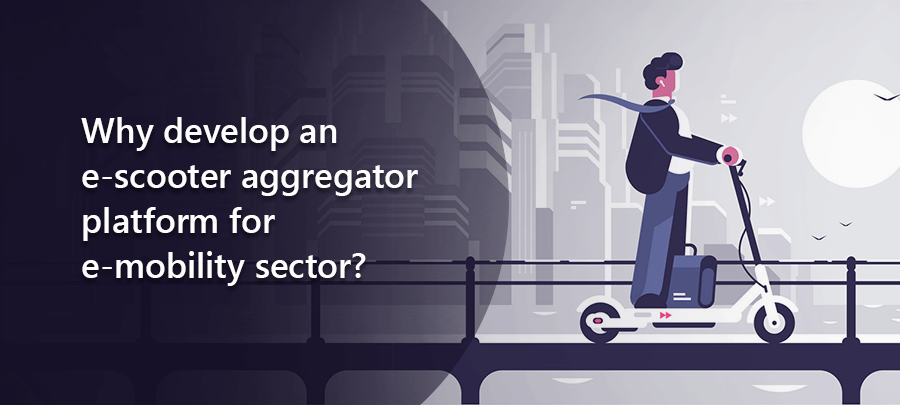By the year 2030, 60% of the world population will live in urban areas. There are already around 1.2 billion passenger vehicles on the road. By 2030, this figure is projected to reach 1.6 billion.
Over the last few years, the rise of micro-mobility companies has been well documented!
The vehicles themselves largely resemble scooters designed for personal recreational use, for which they often struggle to meet the requirements for commercial use and the form factor itself limits the pool of potential users- people with disabilities. As cities are growing rapidly in terms of population, the need to move more residents through existing transportation networks is diminishing. In urban areas, over half of the world’s population are residing and that could rise to two-thirds by 2050. Well, all these people need to move. The requirement for urban passenger-miles across the entire modes could almost double between 2015 and 2050.
People are more likely to opt for a personal vehicle if people lack a convenient, affordable way to get on a bus or train contributing to the gridlock and poor air quality that create trouble for so many cities. Or, maybe worse, they might opt to not travel, forgoing job opportunities, access to healthy food, preventive medical care and much more.
The gap between the level of transit service and the requirement of a community can organize “transit deserts”- areas with transit-dependent populations that lack adequate public transit service.
E-mobility services offer a tantalizing solution to address the first-mile/last-mile problem and to shrink transit deserts. Micro-mobility could be the most powerful tool in the fight to increase access to transportation for traditionally underserved communities- an important objective for various other cities and places. Limited survey information suggests that support for e-scooters tends to be the topmost amongst lower-income users. Areas with the most need, some micro-mobility providers have failed to meet city-mandated benchmarks for numbers of vehicles and numbers of trips originating.
That is the reason you need to get into the business right away with an aggregator digital platform.
Check out for more details about e-scooter tech solution development!
Can e-scooter companies be profitable?
Well, it is too early to say one way or another because of early e-scooter unit economics have been continuing still and are subjected to seasonality. Manufacturers should help to reduce unit costs and increase the useful life as previously announced tech innovations.
The most important of these tech innovations seem to be:
- High range of battery life and interchangeable rechargeable batteries that will significantly reduce the cost of juicers.
- Increase e-scooter life by a factor of 2x due to sturdier e-scooters with better materials, efficient construction and larger wheels.
The vast majority of shared e-scooters have been manufactured by Segway, a subsidiary of Chinese hardware manufacturer Xiaomi and InMotion since Bird put the first e-scooters on the streets at the beginning of 2018. Xiaomi and In Motion e-scooters were not actually designed to be shared and have enjoyed a near duopoly in the sector that has deterred either from spending significant R&D on e-scooter innovation. It is changing and developing as new entrants are offering improved models. As a result, the latest entrants should kick start innovation and competition among manufacturers that will hopefully increase scooter life and unit economics
All about payments:
Micro-mobility companies such as Grin and Yellow in unbanked and underbanked countries are offering facilities such as convenient digital wallets and digital payment. These organizations will eventually permit customers to purchase ride credits with cash, usually at a discount rate and then allow them to utilize these ride credits for other purchases and payments like utility bills, shops and restaurants as well as for money transfers between friends. As examples discussed, it is possible the winners of the micro-mobility wars in under and unbanked populations will have the opportunity to build a financial business on topmost of their micro-mobility businesses on a large scale.
For cities!
With ride-hailing services, micro-mobility specifically e-scooters has raised the hackles of many local governments that often see it as an unwelcome repetition of their experience. Cities were caught flat-footed by the entry and rapid growth of services that, almost overnight upended established and relatively staid taxi systems across the globe. With the results of ubiquitous ride-hailing that includes labour concerns, congestion, and competition with public transit, governments were forced to quickly grapple. Into the place different kinds of policies to address the ride-hailing industry, various cities are just now putting into places.
Optimism prevails, despite the uncertainty around e-mobility strategies. Most respondents believe that today’s leading car manufacturers will be able to maintain market dominance in the next three years regardless of proliferation of well-funded newcomers in the market that may shake the resolve of industry incumbents.
Check it out -> Why is there a need to develop an e-scooter mobile app to skyrocket your e-scooter business?
Future Outlook of e-mobility!
You can accelerate next-generation mobility solutions development through multiphysics simulation technologies. The solution provided enables optimization throughout the development cycle, all backed up by a global team of engineering consultants from smart control design to power train electrification and vehicle architecture studies. To meet the challenges of e-mobility vehicle development, together we empower design teams to create innovative solutions.
Within this, the advent of hybrid, fully electric and even autonomous platforms has increased the complexity of vehicles and systems by reducing prototyping and maintenance costs. While efficiently managing this added complexity, the flexibility system modeling solutions enable you to create innovative products. During fostering multi-disciplinary teamwork, engineers can produce rigorously accurate development lifecycle models that integrate virtual testing and validation requirements.
The entire ecosystem of companies working in an around mobility to actively shape its emergence is being served by the Future of Mobility.






